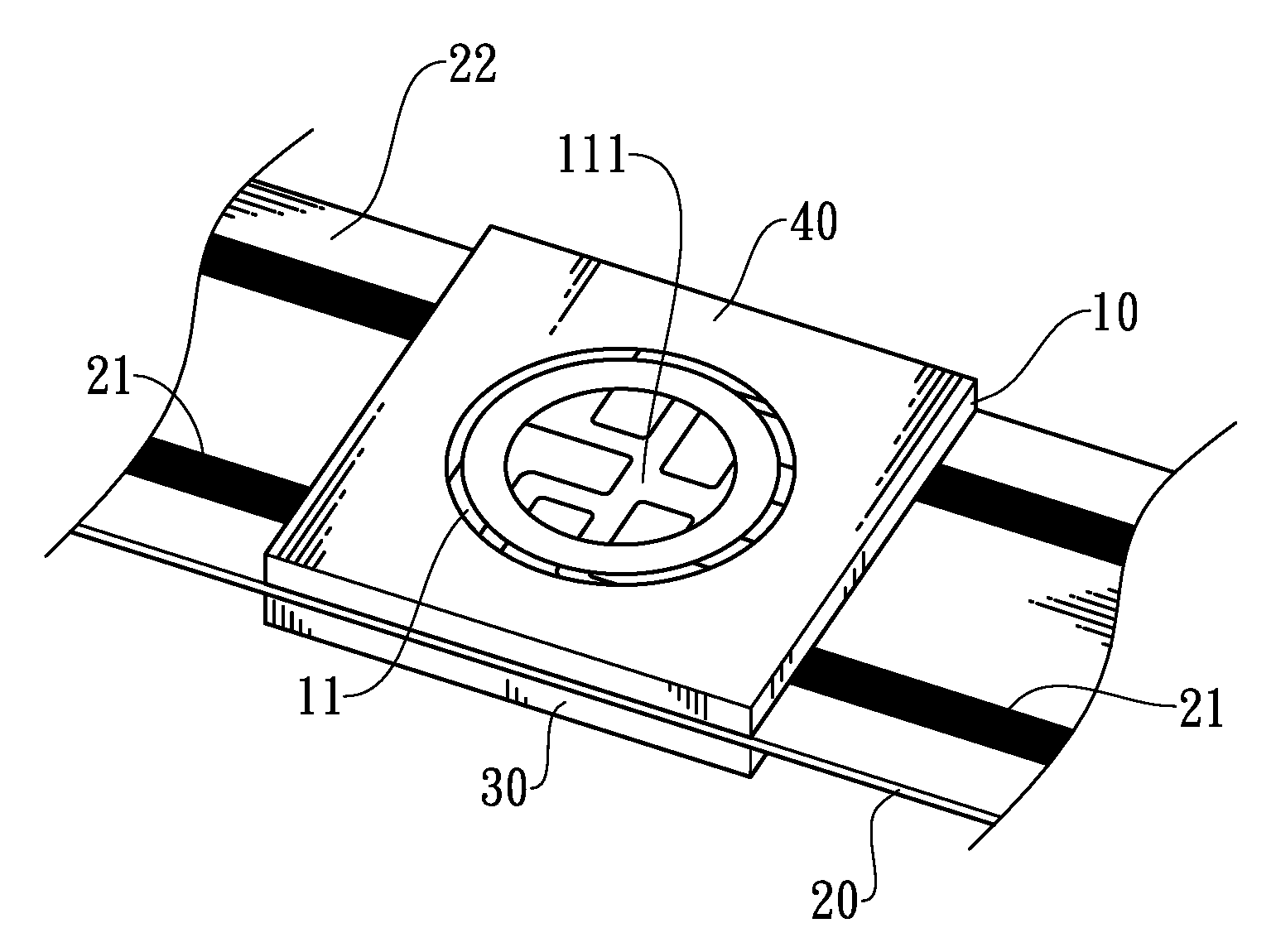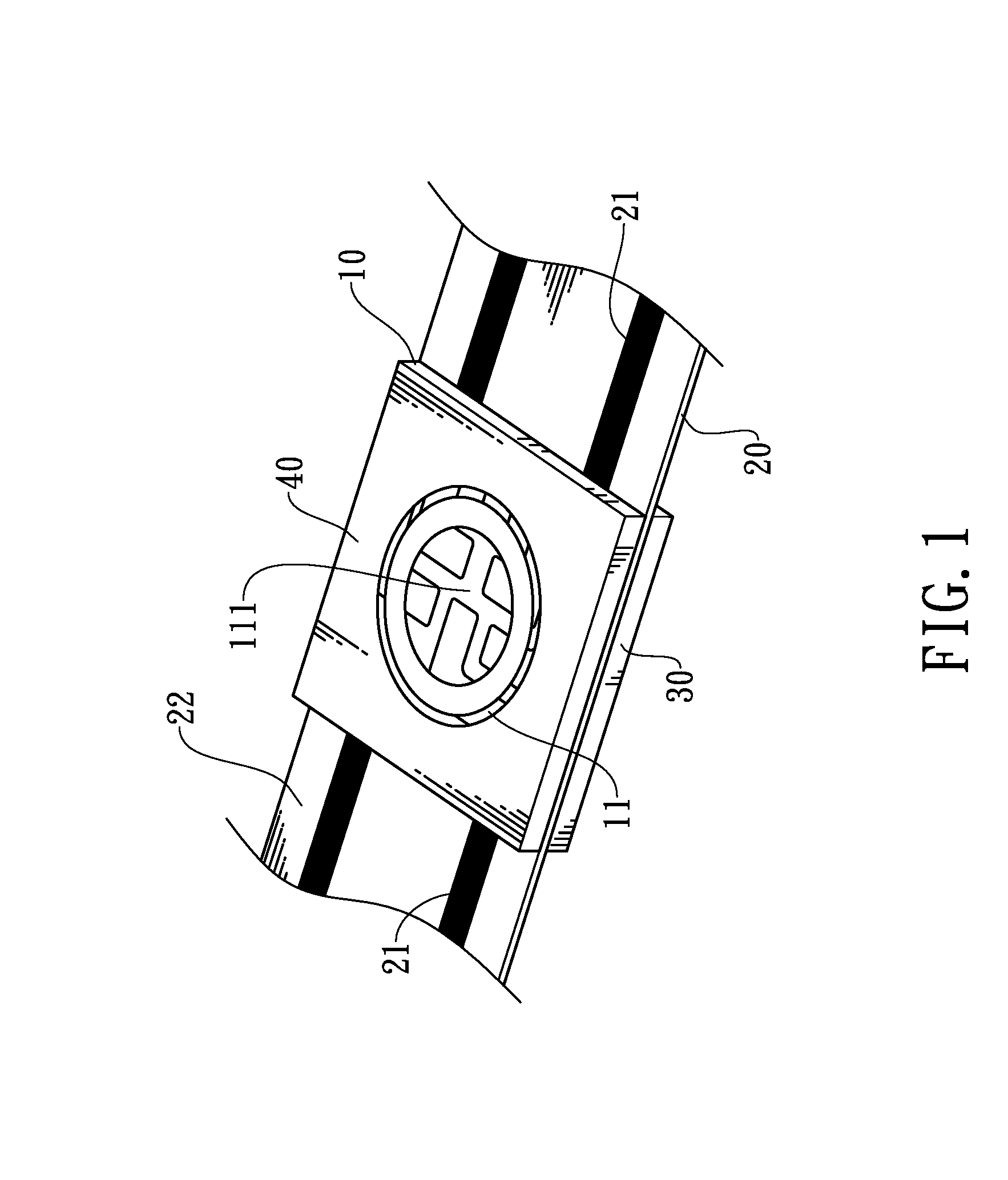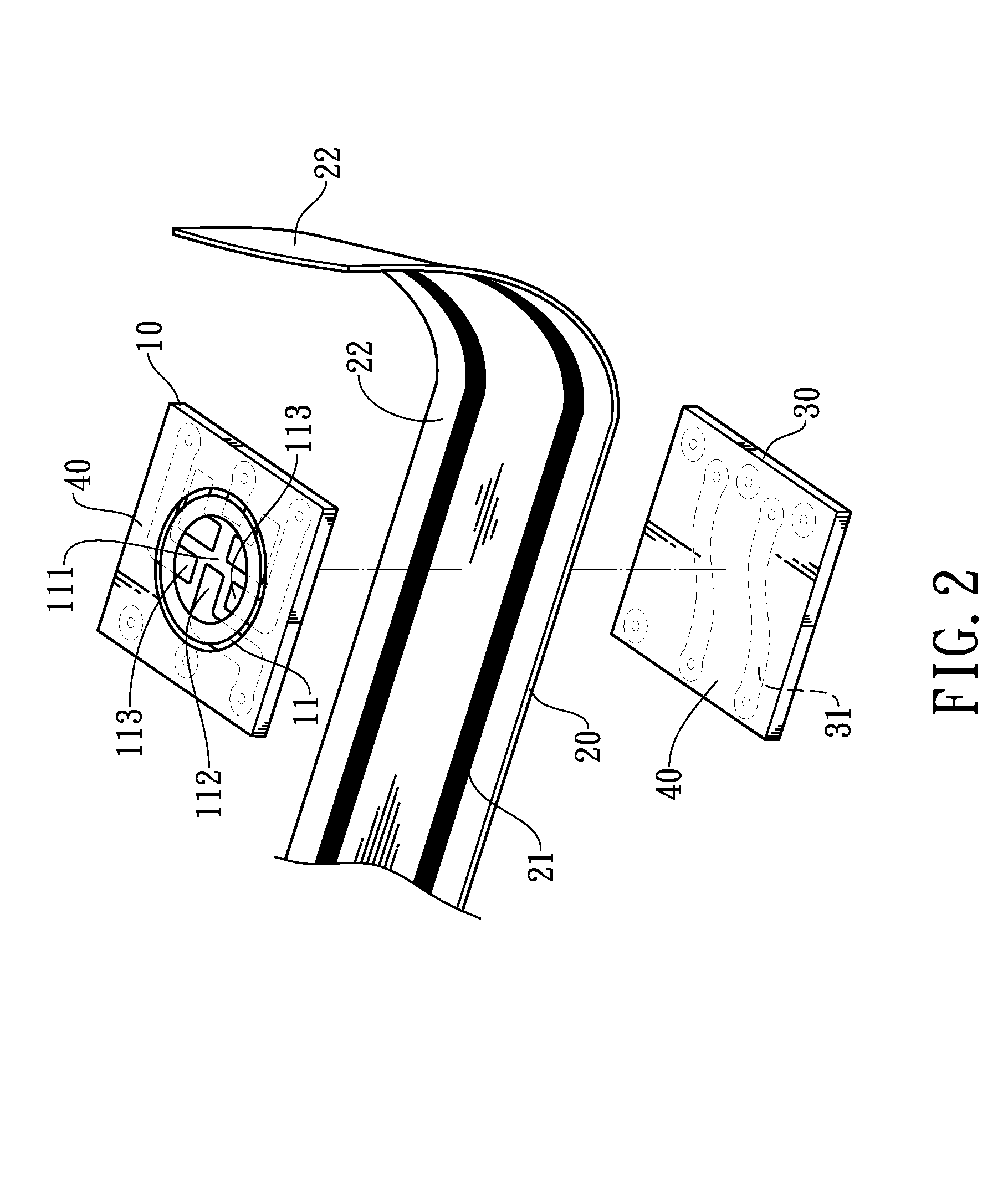Substrate structrue for light-emitting diode
a technology of light-emitting diodes and substrate structures, which is applied in the direction of semiconductor devices, printed circuit aspects, solid-state devices, etc., can solve the problems of increased manufacturing costs, increased flaw rate of products, and large size, so as to reduce costs, enhance the passing rate of manufactured products, and eliminate potential flaws of failure soldering.
- Summary
- Abstract
- Description
- Claims
- Application Information
AI Technical Summary
Benefits of technology
Problems solved by technology
Method used
Image
Examples
Embodiment Construction
[0017]With reference to the drawings and in particular to FIGS. 1-4, which show a substrate structure for a light-emitting diode (LED) constructed in accordance with the present invention, the substrate structure of the present invention comprises an upper layer substrate 10, which comprises an insulation substrate, which can be for example a printed circuit board (PCB), a glass fiber board (such as FR-4), a temperature-resistant glass fiber board (such as FR5), a ceramic substrate, a metal-core PCB (MCPCB), a direct copper bonded (DCB) substrate, a metal composite board, a copper-coated aluminum board, or an aluminum board. The upper layer substrate 10 has a top face on which a conductor pattern 11 is formed. The conductor layer 11 is formed by coating a conductor layer on the top surface of the upper-layer substrate 10, followed by etching to form a desired layout of conductor lines. The conductor layer 11 is formed to comprise a bonding zone 111 and a plurality of electrode zones...
PUM
 Login to View More
Login to View More Abstract
Description
Claims
Application Information
 Login to View More
Login to View More - R&D
- Intellectual Property
- Life Sciences
- Materials
- Tech Scout
- Unparalleled Data Quality
- Higher Quality Content
- 60% Fewer Hallucinations
Browse by: Latest US Patents, China's latest patents, Technical Efficacy Thesaurus, Application Domain, Technology Topic, Popular Technical Reports.
© 2025 PatSnap. All rights reserved.Legal|Privacy policy|Modern Slavery Act Transparency Statement|Sitemap|About US| Contact US: help@patsnap.com



